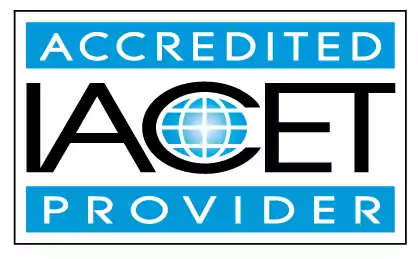Demonstrate ways to help prevent or prepare for threats of bomb, shooters, or disgruntled/impaired persons.
Learn effective strategies to prevent or prepare for threats of bomb, shooters, or disgruntled/impaired persons in early childhood education and child care centers. Discover ways to enhance emergency preparedness and response to protect children and staff in the event of emergencies and disasters.Trainings incorporating this outcome
Proficiency Level
Target Audience
Price
States
Alabama (1) Alaska (1) Alberta (1) Arizona (1) Arkansas (1) Australia (1) California (1) Colorado (1) Connecticut (1) Delaware (1) District of Columbia (1) Florida (1) Georgia (1) Hawaii (1) Idaho (1) Indiana (1) Iowa (1) Kansas (1) Louisiana (1) Maine (1) Maryland (1) Massachusetts (1) Michigan (1) Minnesota (1) Mississippi (1) Montana (1) Nebraska (1) New Hampshire (1) New Mexico (1) Newfoundland and Labrador (1) North Dakota (1) Nova Scotia (1) Ohio (1) Oklahoma (1) Oregon (1) Pennsylvania (1) Prince Edward Island (1) Puerto Rico (1) Quebec (1) Rhode Island (1) Saskatchewan (1) South Carolina (1) South Dakota (1) Texas (1) Utah (1) Vermont (1) Virgin Islands (1) Virginia (1) Washington (1) West Virginia (1) Wisconsin (1)
6 hours courses
Related Outcomes
- Demonstrate ways to help prevent or prepare for emergencies and disasters
- Demonstrate ways to help prevent or prepare for severe storms and cold.
- Demonstrate an understanding of proper food storage and preparation.
- Describe and define various ways to prepare for earthquakes and floods.
- Identify ways to help parents and infants/toddlers handle separation and attachment.
- Describe how caregivers can help to prevent sudden infant death syndrome.
- Demonstrate an understanding of how ongoing preventive health and wellness care affects child development
- Identify ways to examine child behavior to prepare for guidance.
- Define strategies for prevention of obesity in children including the role of the educator and why prevention is important.
- Teachers will demonstrate a variety of ways for families to be represented in their classrooms when they are not physically present.
- Students will demonstrate ways to ask open-ended and creative questions
- Demonstrate best practices in bullying prevention and response
- Explain the signs and ways to prevent shaken baby syndrome.
- Demonstrate an understanding of standards related to personal appearance, hygiene, and work habits.
- Demonstrate an understanding of the most effective way to listen to a child.
- Identify the signs of child abuse and neglect and demonstrate knowledge of appropriate reporting process.
- Identify appropriate practices for identify and demonstrate an children: Define Developmentally Appropriate Practice
- Demonstrate an understanding of how environment and equipment modifications support individual needs
- Describe ways to analyze classrooms for an anti-bias approach.
- Demonstrate an understanding of approaches to learning
Related Articles
- How Does the Americans with Disability Act ( ADA) apply to child care centers
- Texas Director Credential
- Child Development Associate Certification
- Texas Director Credential Application
- North Dakota and the Child and Adult Care Food Program
- Technology Integration in the Early Childhood Education Classroom
- Helping Kids Make Friends: A Guide for Parents
- The Role of Nutrition in Child Development: What Childcare Providers Should Know
- Emergency Preparedness in Childcare: Creating and Practicing Safety Protocols
- How Screens Turn Your Child’s Brain into a Battleground of Bliss and Boredom
- First Aid for Frosty Fingers: Holiday Safety and CPR Tips Every Parent Should Know
- Trauma and Tantrums: How Stress Shapes Behavior (and How to Help)
- Handle Tiny Humans with Care: Trauma-Informed Care Tips for Early Childhood Educators
- Trauma-Informed Care Strategies for a Calmer 2025 Classroom
- Zen and the Art of Early Childhood Education: Self-Care for the Educators
- Why Basic Health and Safety Training Is Crucial for Child Educators
- From Tornadoes to Lockdowns: Prepare Your Childcare Center for the Unexpected
- ⚠️🤝 How Can I Tell the Difference Between Bullying and Normal Conflict?
- 😤💬 “What Should I Say to a Child Who Just Bit Someone?
 0.6 CEUs
0.6 CEUs